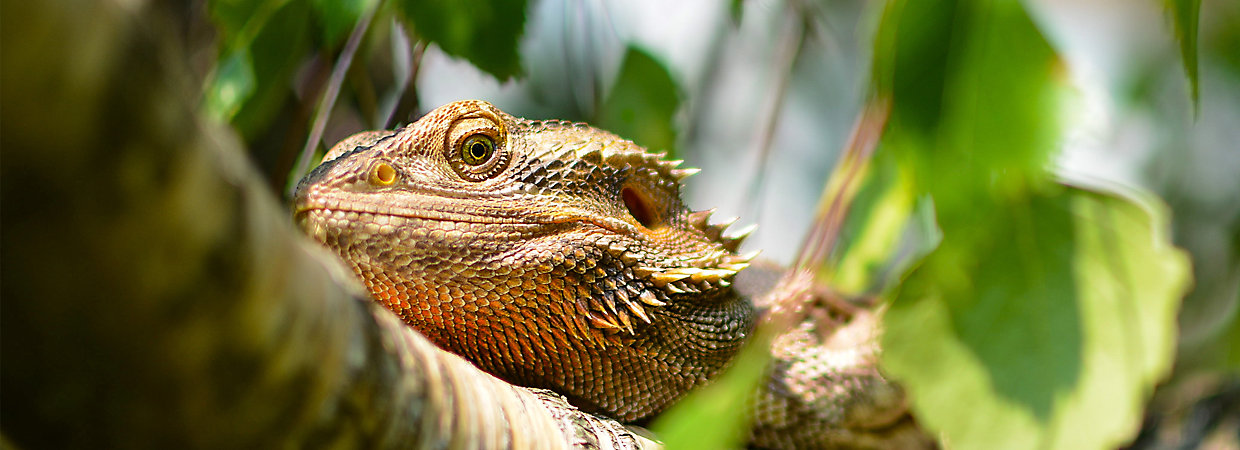Bearded dragons are popular pet reptiles due to their friendly personalities and easy care requirements. One of the most important aspects of caring for a bearded dragon is setting up a suitable habitat, or tank, for them to live in. Here is a guide on how to set up a bearded dragon tank:
Tank Size
The first thing you need to consider is the size of the tank. A bearded dragon requires a minimum tank size of 40 gallons for an adult, and it should be at least 18 inches high, 36 inches long, and 12 inches wide. However, larger is always better, and a tank size of 75 gallons or more is recommended.
Lighting and Heating
Bearded dragons require specific lighting and heating to thrive in captivity. You will need to provide a basking area with a heat lamp to create a temperature gradient in the tank. The basking area should be around 100-110°F (37-43°C), and the cool end should be around 75-85°F (24-29°C). You should also provide a UVB light that covers at least two-thirds of the tank to provide your bearded dragon with the necessary vitamin D3. The UVB light should be replaced every 6-12 months.
Substrate
The substrate is the material that lines the bottom of the tank. Bearded dragons require a substrate that is safe, easy to clean, and would not cause impaction. Impaction occurs when a reptile ingests something they cannot digest, leading to digestive blockages. Avoid using sand, gravel, or any small particles that your bearded dragon may ingest. Instead, use reptile carpet, paper towels, or tile as a substrate.
Hides and Decorations
Bearded dragons require a place to hide and feel secure. You should provide at least two hides in the tank, one on the warm end and one on the cool end. You can use commercially available hides or create your own using hollow logs, boxes, or PVC pipes. Decorations such as branches, rocks, and fake plants can also be added to provide climbing opportunities and to make the Bearded Dragon Tank Setup 101 look more aesthetically pleasing. Ensure that all decorations are secure and would not fall on your bearded dragon.
Food and Water Bowls
 Bearded dragons require fresh water every day, which should be provided in a shallow dish that they can easily access. The water dish should be cleaned daily to prevent bacterial growth. You should also provide a food dish to feed your bearded dragon. The dish should be large enough to hold the food and shallow enough for the bearded dragon to easily access it.
Bearded dragons require fresh water every day, which should be provided in a shallow dish that they can easily access. The water dish should be cleaned daily to prevent bacterial growth. You should also provide a food dish to feed your bearded dragon. The dish should be large enough to hold the food and shallow enough for the bearded dragon to easily access it.
Feeding
Bearded dragons are omnivorous, which means they require both plant-based and animal-based foods. You can feed them a variety of fruits and vegetables, such as kale, collard greens, carrots, and bell peppers. They also require protein from insects and other small animals, such as crickets, mealworms, and roaches. You should provide the appropriate amount of food based on the size and age of your bearded dragon.
Cleaning
It is important to keep the tank clean to prevent the growth of harmful bacteria and parasites. Spot clean the tank daily by removing any feces and uneaten food. Every two to four weeks, deep clean the tank by removing all decorations, substrate, and cleaning the tank with a reptile-safe cleaner. Rinse everything thoroughly before adding new substrate and decorations.
In conclusion, setting up a bearded dragon tank is relatively easy, as long as you follow these steps. Choosing the right size tank, installing a heat source and UVB light, providing a safe substrate, adding decorations and hiding spots, installing a water bowl, providing a balanced diet, and maintaining the tank are all essential steps to keep your bearded dragon healthy and happy. Remember, bearded dragons are unique pets that require proper care and attention, so make sure you are committed to providing them.
